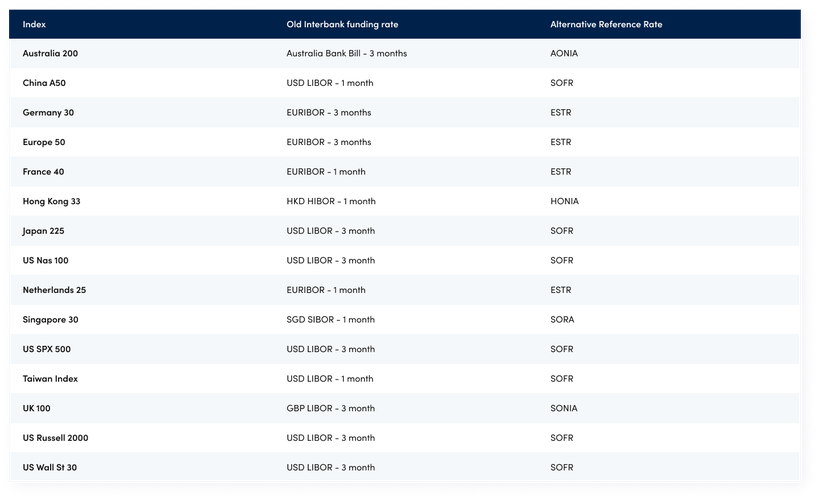Generally, our spreads are reflective of underlying market liquidity*. Using the chart below you can see how our spreads change over time as a result of changes in the underlying markets.
Select your asset class and instrument, then use the slider below the chart to zoom in or select a time range.
You can view an average, minimum and maximum spread calculated over 15-minute time intervals. As you zoom out, the time intervals will increase in size.
Regulators have expressed concerns about the reliability and sustainability of IBORs. Stringent liquidity rules brought on by the 2008 financial crisis, coupled with LIBOR’s loss of credibility due to scandals and its part in the crisis, saw IBORs becoming less attractive for short-term, unsecured interbank lending. This led to a significant decline in the interbank unsecured funding markets in the last decade, as well as a lack of liquidity - leading to a market which is not adequately representative. This prompted regulators to shift their preference towards Alternative Reference Rates (ARRs).
IBOR users will be switching to Alternative Reference Rates (ARRs). ARRs are based on actual overnight interest rates in liquid wholesale cash and derivative markets. This makes ARRs more robust and less volatile than IBORs.
Since ARRs are risk-free rates, they don’t incorporate the credit risk that is inherent in the calculation of IBORs, which are based on interbank lending over longer time periods.
The table below shows the former and current basis of the funding rate for each index product.

*where value of position = size of position x price at the end of the trading day (5pm ET).
**For long indices positions, applicable funding rates are admin fee of 2.5% plus relevant alternative rate, annualised. Represented by a negative rate, and hence a charge.
For short indices positions, when the relevant alternative rate is greater than our 2.5% admin fee, the rate used will be the difference between the two, annualised. This is represented by a positive rate, and therefore a credit.
When the relevant alternative rate is lower than our 2.5% admin fee, the rate used will be the difference between the two, annualised. This is represented by a negative rate, and therefore a charge. See our financing costs page to know more about our applicable funding rates.
